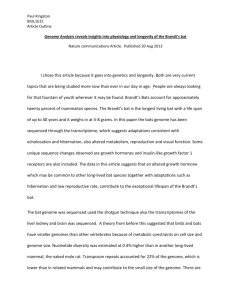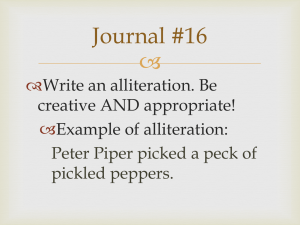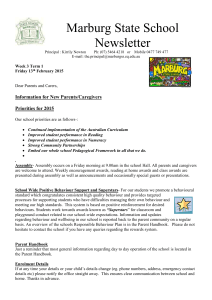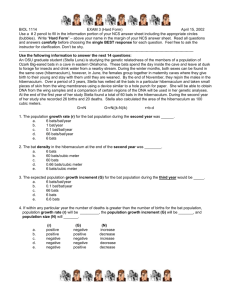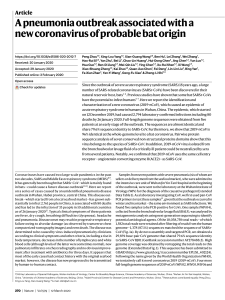Abstract_for_GSI_2015_SSDSouza
advertisement
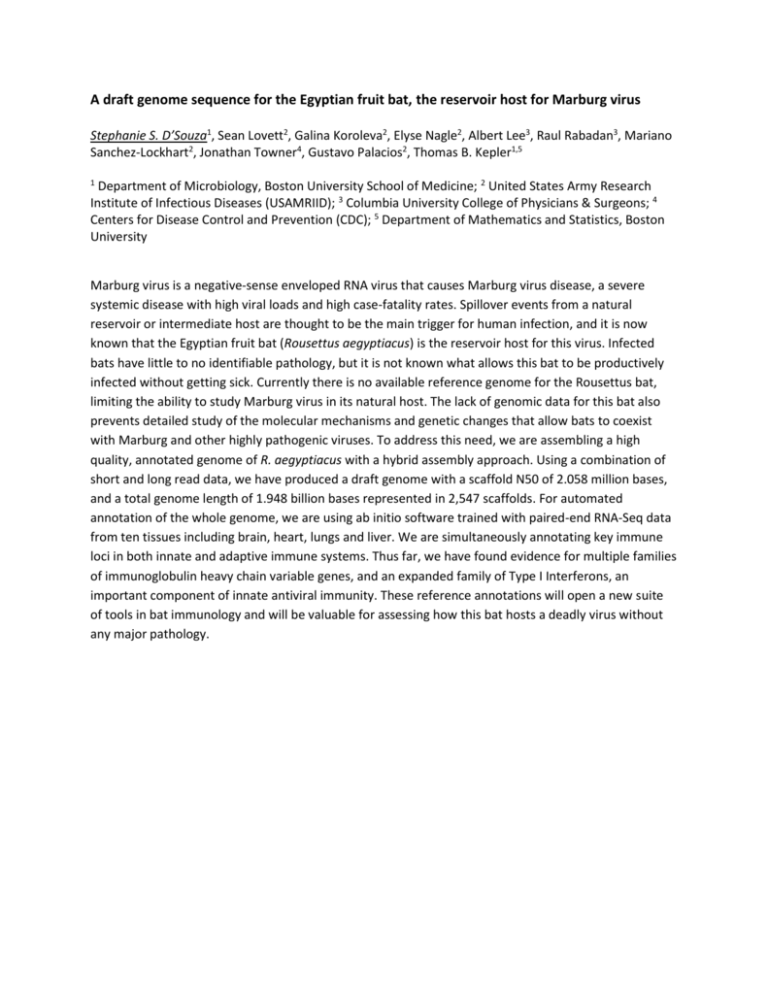
A draft genome sequence for the Egyptian fruit bat, the reservoir host for Marburg virus Stephanie S. D’Souza1, Sean Lovett2, Galina Koroleva2, Elyse Nagle2, Albert Lee3, Raul Rabadan3, Mariano Sanchez-Lockhart2, Jonathan Towner4, Gustavo Palacios2, Thomas B. Kepler1,5 1 Department of Microbiology, Boston University School of Medicine; 2 United States Army Research Institute of Infectious Diseases (USAMRIID); 3 Columbia University College of Physicians & Surgeons; 4 Centers for Disease Control and Prevention (CDC); 5 Department of Mathematics and Statistics, Boston University Marburg virus is a negative-sense enveloped RNA virus that causes Marburg virus disease, a severe systemic disease with high viral loads and high case-fatality rates. Spillover events from a natural reservoir or intermediate host are thought to be the main trigger for human infection, and it is now known that the Egyptian fruit bat (Rousettus aegyptiacus) is the reservoir host for this virus. Infected bats have little to no identifiable pathology, but it is not known what allows this bat to be productively infected without getting sick. Currently there is no available reference genome for the Rousettus bat, limiting the ability to study Marburg virus in its natural host. The lack of genomic data for this bat also prevents detailed study of the molecular mechanisms and genetic changes that allow bats to coexist with Marburg and other highly pathogenic viruses. To address this need, we are assembling a high quality, annotated genome of R. aegyptiacus with a hybrid assembly approach. Using a combination of short and long read data, we have produced a draft genome with a scaffold N50 of 2.058 million bases, and a total genome length of 1.948 billion bases represented in 2,547 scaffolds. For automated annotation of the whole genome, we are using ab initio software trained with paired-end RNA-Seq data from ten tissues including brain, heart, lungs and liver. We are simultaneously annotating key immune loci in both innate and adaptive immune systems. Thus far, we have found evidence for multiple families of immunoglobulin heavy chain variable genes, and an expanded family of Type I Interferons, an important component of innate antiviral immunity. These reference annotations will open a new suite of tools in bat immunology and will be valuable for assessing how this bat hosts a deadly virus without any major pathology.

